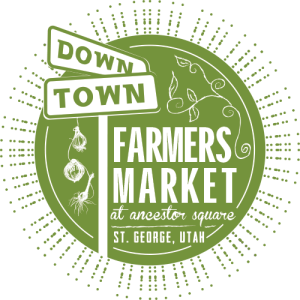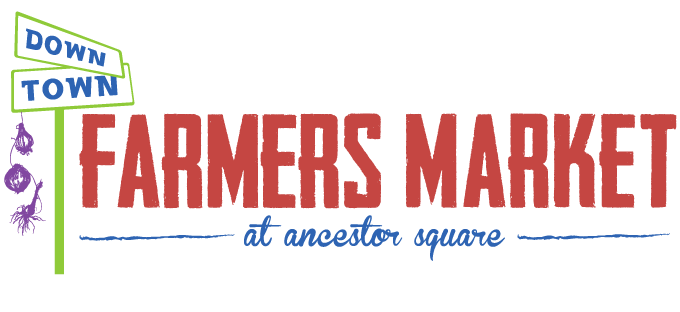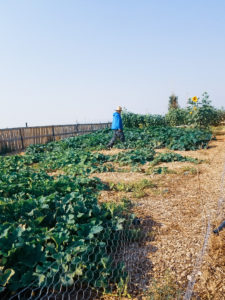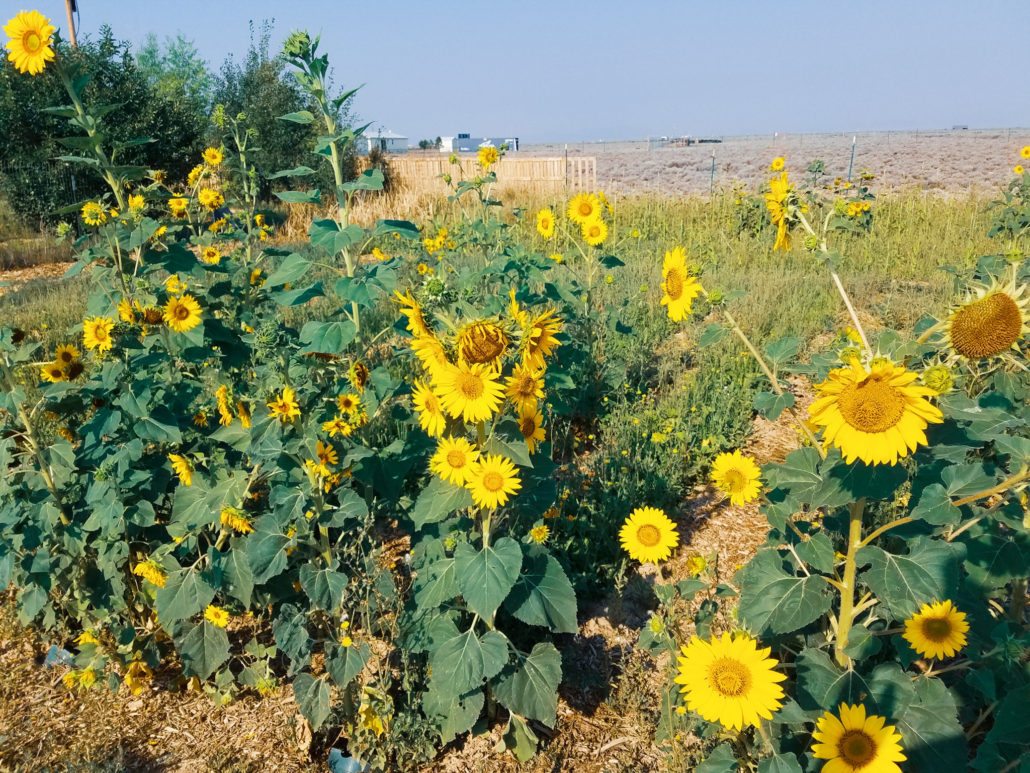Seth Stinson
One thing that I whole-heartedly love about the Farmers’ Market is the wide variety of personalities that it brings together. You’d think that it would attract the same type of people, but everyone is different, quirky, and fun in their own way. I think Seth Stinson is probably the embodiment of that. He is always bright eyed and bushy tailed, quick with a joke, and light hearted to the extreme. His unique range of products exemplifies his individuality. Who else sells duck eggs and live fermented foods like pickles and Kim-chi? So, I was absolutely delighted when given the opportunity to go spend a morning with Seth up in Central, Utah. As I pulled into the cabin studded subdivision, it was hard to imagine a farm out here. The rugged, dry landscape seemed only conducive to the gnarly junipers and Pinyon pines that dominated the scenery. As I rounded a corner dense with trees, I veered sharply into Seth’s concealed driveway. As I pulled up to the three story, A-frame house, Seth was standing outside wearing his signature smile and farmers’ market t-shirt. That’s so awesome, I thought as I hurriedly unbuckled to get out of the car. “Hello!” Seth called. “Now, where would you like to start?” he said, wasting no time. “Wherever you think is best. This is your show!” I answered. “Alright, let’s go.” Seth pointed to the right side of the house and we were off.
Immediately to the right of the driveway the terraced gardens began. The retaining walls are compiled out of all kinds of
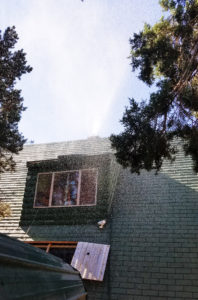
Roof top sprinkler
bricks, cinderblocks, and huge pieces of wood. Each section contains a variety of plants. By the time we had reached the edge of the house, the rugged natural landscape was replaced with the dreamy, green wilderness Seth has created. “You want to see something neat?” Seth started fiddling with the hose spigot. I looked at him inquisitively. Surely, he knows I’ve seen a hose before, I thought. “Look!” Seth then pointed to the hose that was running up his roof. I traced it to the top with my eyes and by the time they reached the sprinkler mounted to the roof, water began shooting out of it. “It has a 60 foot watering circumference. It’s also completely efficient: water lands on the roof cooling the house, then runs down the roof into the beds below, no water is wasted.” I stood there laughing in the early morning shower. “Okay, that’s enough.” Seth turned the water off. “Let’s go over here.” He began walking down the garden-lined path that leads around the house. If it’s possible to have a Willie Wonka and the Chocolate Factory moment about gardening, I was having it. Each bed had its own unique piece of art and complimentary variety of plants. More and more levels of the terraced gardens came into view, making the garden visually appear to be 7 feet tall. There was so much to take in I had to stop and start laughing in overwhelm, “Seth!” I exclaimed. He turned around quickly, probably thinking something was wrong with me because I had cut him off midsentence. “This is amazing!” I sputtered, “I mean… How long have you been out here? How did you start all this?” He smiled. Seth calmly explained to me that he had been out in Central for 20 years (which looks like the right amount of time to get a garden like that) and that his parents had always gardened but it wasn’t until he took a Botany class in college that his curiosity and passion for gardening was sparked.
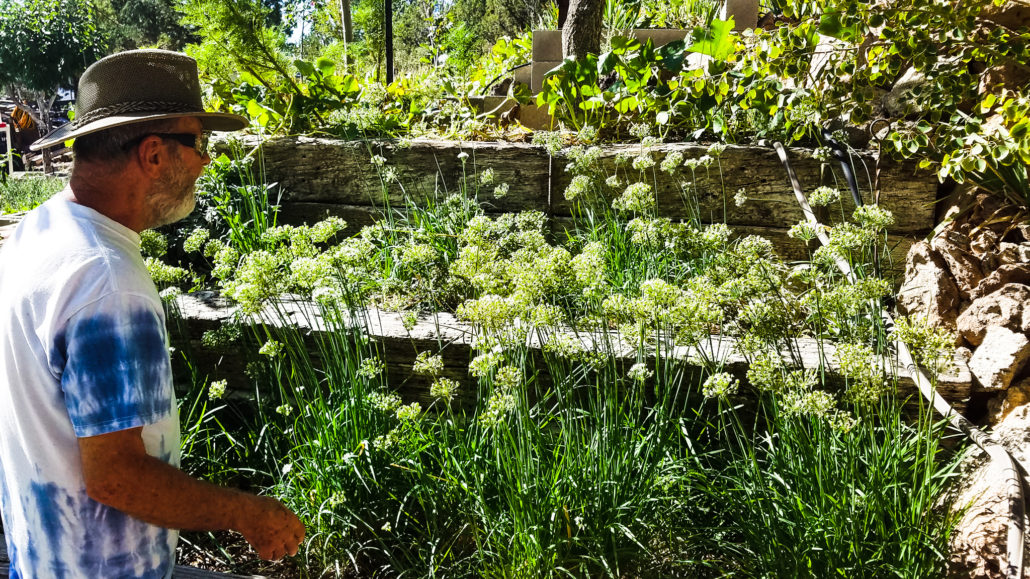
Magnificent Garlic Chives
By this time, we reached the back corner of the walkway where we stood in front of a bed full of Garlic flowers and a wall of herbs. Breaking off a few Garlic Chive flowers, Seth handed them to me. “Here, dry these then plant them and you’ll have your own Garlic Chives. You’ll actually probably need a bag by the time we’re done.” I smiled as I looked down at my flowers thankfully. This is one of my favorite things about gardening: It’s so easy to share and feel connected to each other and history. Now, when I have Garlic Chives in my garden I will always refer to it as Seth’s chives, and I’ll know where it came from. Sentimental and dumb I know. I looked up and realized Seth was up the path a ways. I hustled to catch up. The small, side path came to a huge wall of grapes and opened to a gigantic yard of terraced gardens. “Holy cow!” I said, holding my hand to my brow to shade my eyes. Bed after bed of beautiful tomatoes, fruit trees, and vegetables sprawled out in front of me. “Yep I do what I can,” Seth said casually. I was completely stunned as Seth started telling me the different varieties and ages of the plants. “See those two pear trees there? Through grafting, I’ve made it so I get 5 different types of pears from each.” He said matter-of-factly. “No way! That actually works?” Seth nodded. It was hear that Seth pointed out that he had 27 different types of trees on the property, including a very extensive collection of Utah native plants. “Here let me show you the Jujube tree.” Seth excitedly walked down a side path. “This is the only tree I get fruit from every year because it waits so long to bloom. The other trees are idiots and bloom in March then freeze, but not this one.” I couldn’t help but laugh. It wasn’t hard to spot because the tree was chalk full of exotic looking green fruit. “So, the fruit comes on, I leave it on the tree to dry and then I pick it.” Seth said, while pointing out the male and female Jujube trees he was cultivating. “Wait, you leave the fruit on there?” I repeated. “Yep. The birds don’t know what it is, so I don’t have to worry about them.” I chuckled. Of course, Seth would have a tree that confused birds, of course! Why wouldn’t he?

terraced gardens and the grape wall
This put us down the path that led to the duck pen which is encircled by gardens of leafy greens. “Ok, you see these greens?” Seth said. “They feed me and the ducks.” He grabbed a quick bunch and took them over to a table that already had a chopping board and a knife. Seth quickly chopped up a gigantic salad, took a mouthful and threw the rest over the fence. “I feed them good duck food and organic greens.” He said as he munched. I was mesmerized by the chocolate-golden colored ducks swarming in front of me. “So, you don’t spray?” I asked. “Nope. I don’t. I think the chemicals they put in our food is what’s killing us.” Seth answered. I nodded in agreement as I looked back at the ducks. “What kind of ducks are these? I’ve never seen them before.” I asked. “They are Golden 300’s. They’re called that because they are supposed to lay 300 eggs a year. Each egg can be 3-4 times the size of a chicken egg too.” Seth answered, I asked if they slow down in the winter and Seth shook his head. “As long as they get 18% protein they’ll lay all year long. Want to collect some eggs?” Seth asked unhinging the gate. I nodded an emphatic yes. Seth showed me around the coop and then to some of the hidden nests throughout the pen to collect the gigantic, fake-looking, white eggs. “This is a really clean pen, Seth. I was always told that ducks were super messy.” Seth chuckled a bit, “Ducks are only messy if you leave open water around them. It’s all about how you keep them.” We stood and watched them run around for a bit before Seth told me he had twelve new ducklings up on the porch. He must have read the sheer excitement on my face because he immediately began to lead me to the back porch. When I climbed the staircase onto the back porch, the view opened up to a beautiful panoramic view of the mountains. “Well, that’s beautiful.” I said pointing out. “Yes, it’s really nice. I sleep outside on the top balcony most nights. Until the wind wakes me up.”

Left to right: Golden 300 ducks, Seth making a salad, and DUCKLINGS!!!
Seth led me over to a big blue container and pointed inside. There were twelve of the cutest fuzzy little ducklings I’ve ever

natural fermented goodness
seen all snuggled together. “AWWWW.” I melted as I reached in to touch one. “One of them almost died. It had a really rough journey,” Seth interjected. He then described the painstaking lengths he went to to revive the little girl. In the corner of the deck, over his shoulder, I saw a smoker. I pointed to it, “So do you smoke the ducks?” “What?” He asked. He turned and saw that I was pointing at the smoker. “Oh no. I’m vegan.” He quickly answered. My expression quickly changed. I don’t know why I’m surprised anymore when people say that, but for some reason Seth completely blindsided me. Seth disappeared inside and came out with a bowl of dried apricots, dates, and pine nuts. “This is what I snack on. The pine nuts I harvest from this property, I get about 25 pounds a year.” He stated. “You collect them and roast them yourself?” I asked. “Oh no. I don’t cook anything.” Seth answered. “Wait…” I interjected. Seth watched me patiently as I added everything up in my head, “So you’re not just vegan you’re a raw foodist.” He nodded. “That’s incredible. Why?” I asked. Seth smiled, quoted Hippocrates, and said in a somber tone, “Let thy food be thy medicine.” Seth then ran me through his long list of medical problems that started with him almost dying at 30. He talked about how one doctor took a huge risk and, off the record, told him to cut out dairy. “I’ve been on a journey since then to heal myself. That’s why I eat raw. That’s why I have my Master Gardener and Master Preserver certifications. That’s why I sell my fermented products at the market. My mission is to educate. You’ve got to continually put something in your stomach every meal to heal yourself.” It turns out, your stomach acid kills most of the natural probiotic so you have to up your intake to gradually replace it. “I only use organic vegetables and pink Himalayan sea salt. No vinegar. If there is vinegar in something it’s dead, not living.”
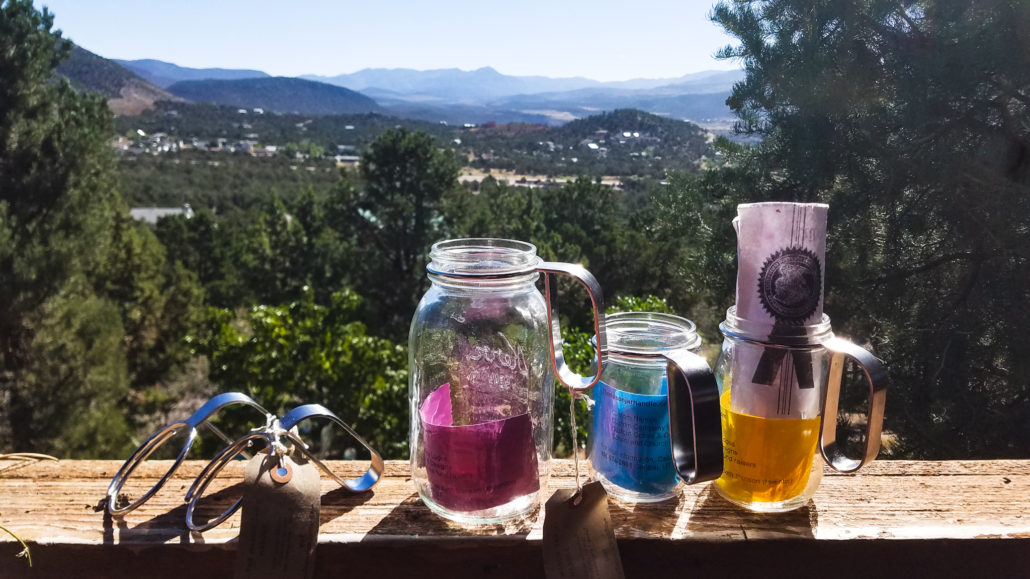
The view from the back porch and Seth’s stainless steel mason jar handles.
We talked for a long time on the back porch. We discussed living off the land, being self-sufficient, his time in the Army, and life in general. We talked about how our food supply system currently isn’t sustainable and the major changes we see coming. All the while, stopping every so often to look out and drink in the incredible scenery at a mile-high elevation. Sitting there on that porch, I felt incredibly grateful and thankful for all the decisions that lead to me getting involved with the farmers market. I have long been looking for answers to my own health issues and it seems that this job continually puts me in the path of awesome, inspirational, community members that gently lead me to a simpler way of living. Even though I’m slow and still teetering about going full vegan, I think it’s essential to always have conversations which make you evaluate your beliefs. Trust me when I tell you that if anyone can make you question everything, it’s Seth Stinson. I thankfully picked up my bag full of grapes, garlic flowers, and goodies and headed down towards the car. I made Seth take one more picture and then loaded up. As I backed out of the driveway, I kept repeating to myself, “That was so awesome!” and smiled the whole way home. You can support Seth every Saturday at the Downtown Farmers Market at Ancestor Square.
